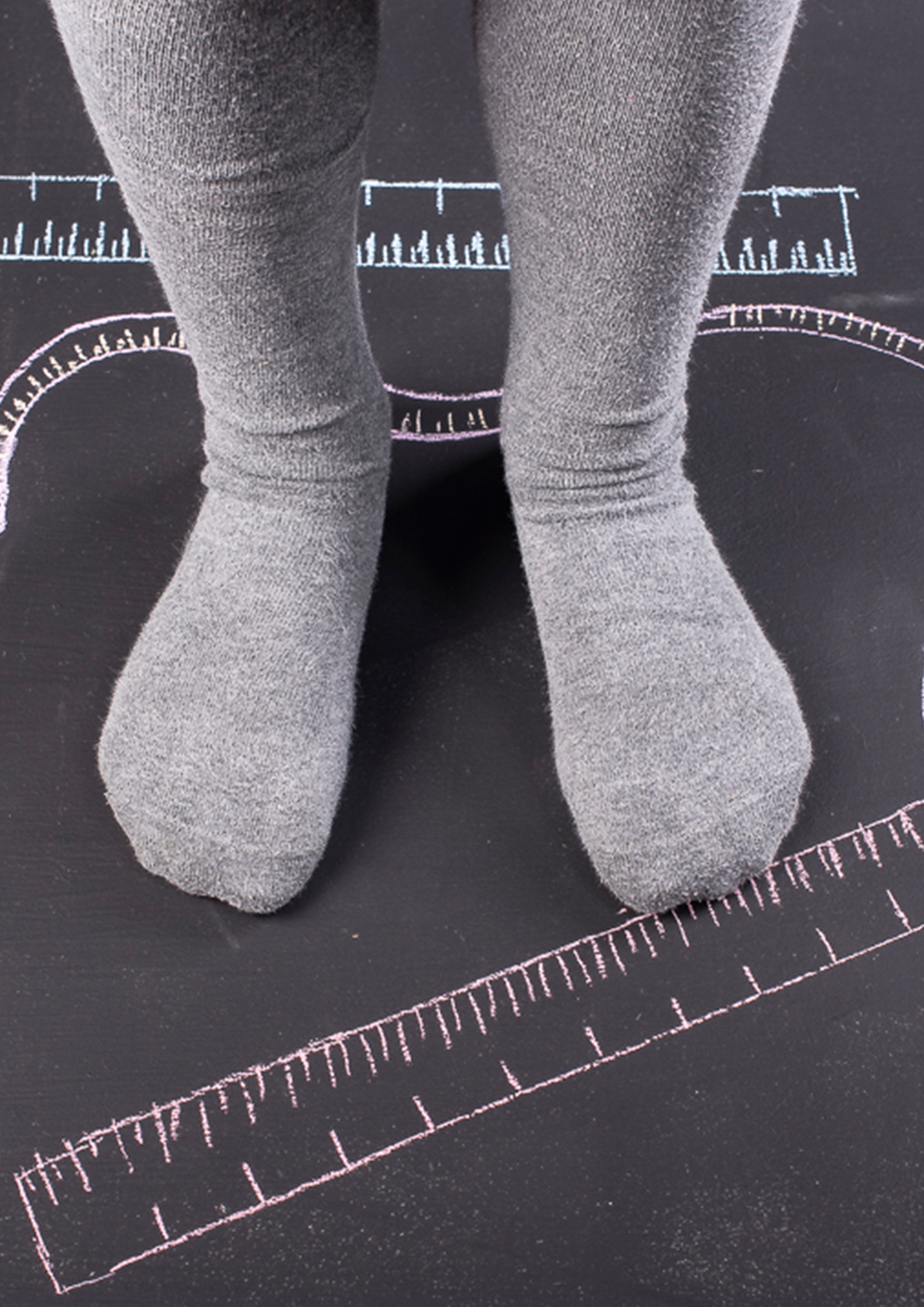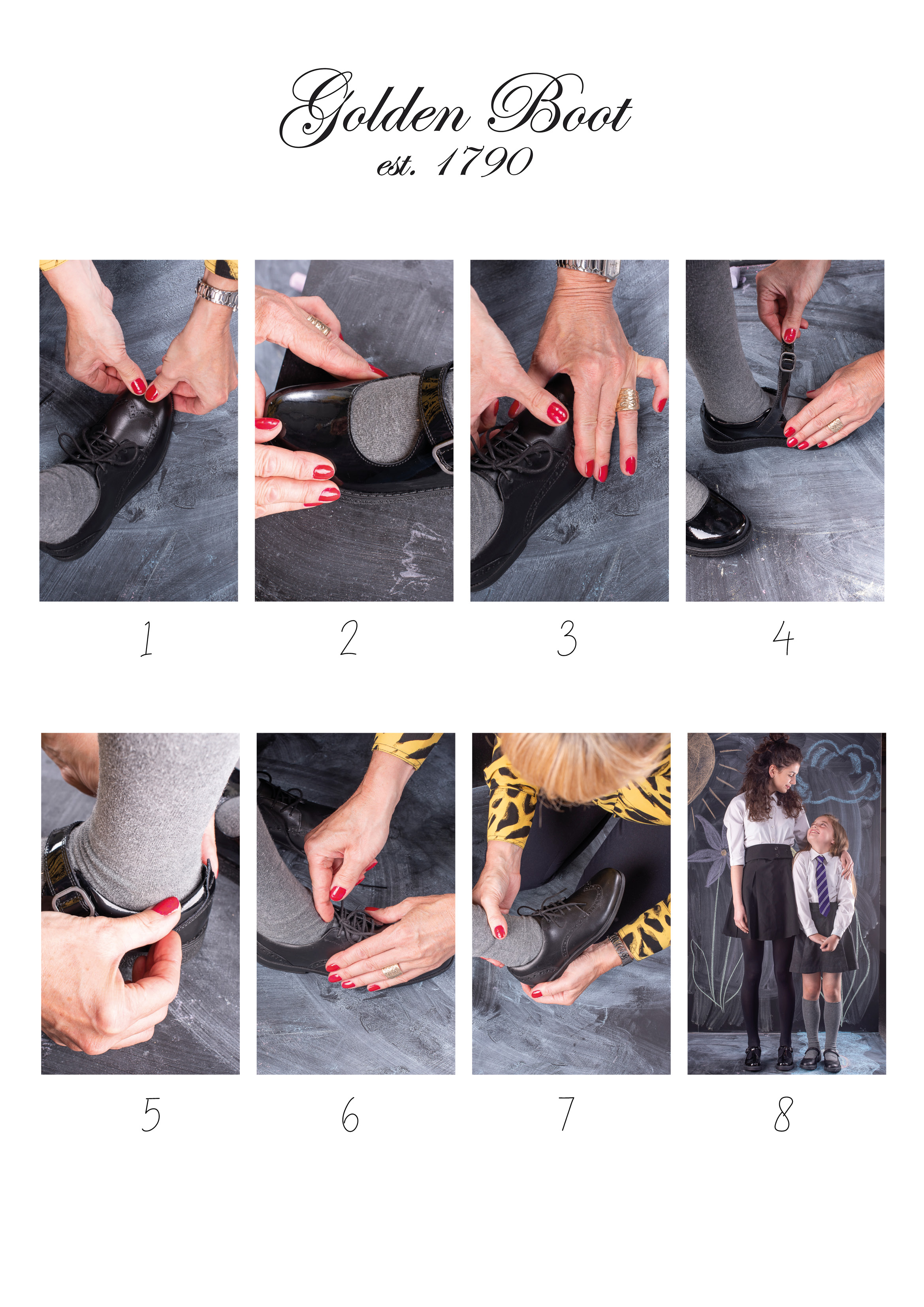At The Golden Boot, we are passionate about perfectly fitted shoes. We would like to share some tips and tricks with you so you know exactly what to look for whilst fitting your children’s new shoes at home.
To begin, ensure that your child tries on the shoes (wearing appropriate socks) and follow our guide below:
- Check that there is a little growing room at the toes. We use a ‘thumbs width’ as a general rule. For open toe sandals, allow a little less to avoid a tripping hazard.
- Feel the width of the shoe – checking across the widest part of the foot. Ensure that the toes are not squashed and equally that they don’t have too much room to move – the shoes need to feel secure and snug.
- Check the depth of the shoe to ensure that they will not cause rubbing on top of the toes.
- If the shoes have straps, see that these are sitting at a comfortable position on the foot and not digging into the skin.
- Feel around the back of the foot to ensure that that heel is sitting comfortably.
- Check the toplines of the shoes (the openings of the shoe eg the part sitting just below the ankle bone, the front of a Mary Jane, the top of a tongue or lace facing). It should not feel too tight or too loose. If you can fit the very top part of your fingers between the shoe and the foot – this is perfect.
- Gently tug at the back of the heel whilst holding the ankle. The shoes should not come off or feel loose but feel securely in place.
- Lastly, ask your child to go for a walk! Discuss how they feel: adjust the laces, straps, buckles, if necessary.
Extra Tips from our team!
Tip 1: A given shoe size will fit differently from brand to brand.
The number one tip when looking for a pair of shoes is to realise that different brand products will offer different fit. This may be determined by the shape of the sole and the shape of the style itself.
Here is a comparison of the fitting of children’s brands:
- Deep(wide) foot + bolder leg — opt for Startrite, Clarks may work as well but fit slightly more narrow so are not always suitable for wider feet.
- Average size — Go for Geox, they fit true to measured size.
- Shorter foot — Try Timberland, they tend to fit a little short.
Tip 2: Measure both feet
No person is perfectly symmetrical, so it is important to measure both feet and and use the larger of the two as the guide-shoe-size when choosing shoes. An insole can be used if you find one shoe fits slightly loose. Always wear the new shoes around home for the first time, this way you will find out if there is a fit problem and you won’t damage the sole in case you need to exchange them.
Tip 3: Use the conversion chart on our previous blog to pinpoint the correct European size.
If the shoes are a bit small, don’t be afraid to go for the next size up.
Tip 4: Always allow a bit of room for the toes.
The way to check this is to undo all the fastenings and press the foot to the front of the shoe. You should be able to insert your thumb at the heel. Note that too much void may cause tripping. If fitting sandals, allow a little less than a thumb’s width.
Tip 5: Choose appropriate shoes for the weather
Leather, suede and fabric boots are only waterproof if they have Gore-Tex or AquaRite technology. You can use protector spray to add an extra level of protection. This will mainly be useful in snow/rain and to prevent marks, but not when the boot is submerged in water. Wellies are best for walking in puddles and wet snow conditions. Canvas shoes are often machine washable and our Crocs are wipe clean!




